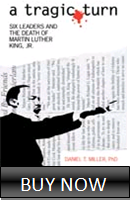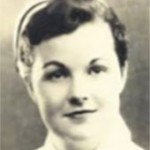1918 Influenza Pandemic Day 504
You read it right–504th day of the pandemic. But it’s not ours in 2022 but theirs, or rather your family’s at that point, in 1920, a half-thousand days into the influenza pandemic. Let’s match your family’s life then to you and your family’s life now.
Warnings: I want you to be sitting down when you read this. Also, put away any light, throwable objects that might be in arm’s reach. And if your first instinct is to fire off an angry text, put up an angry social-media post, or show anger in your next zoom meeting, take a deep breath first so the feeling goes away.
Here we go.
* * * * * * *
It’s January 25, 1920. Newspapers carry reports in most American cities and towns that influenza is back. Pretty much everywhere, more cases and more deaths. The numbers don’t run as high as a year ago this date, but they’re up. In Boston, for instance, a year ago there were 127 new cases, today a year later there are 77. The reports indicate that at this point, influenza is in full swing on its regular wintry appearance in American life. Brace yourself, there could be worse to come, though for now it’s the sign of a normal problem reoccurring.
The nation’s Surgeon General, Rupert Blue, states in a major speech that, yes, cases are rising but there is no cause “for the people to get panicky.” Calm down, stay steady, move forward, that’s the message from Blue, the foremost public health official of the American federal government and, by now in 1920, a household name.
The mayor of St. Louis MO re-issues a public emergency order. However, the mayor has not taken any new steps or measures under that order—the re-issuance is it, nothing more as of yet. Also, the Red Cross announces locally that 1500 nurses will be re-mobilized from the pandemic of a year ago and the World War.
Some cities are bringing back restrictions. New York City, for instance, is reducing hours of operation for stores, theaters, and public transportation. In some communities, schools are closing for a few days. Generally, though, the consensus is that the best approach to students is to teach them how to identify influenza and the best means for avoiding the illness. Most schools stay open as a result.
Here’s a stark statement: “Let common sense prevail and good judgment dictate the conduct of our people, and there is small likelihood of drastic action on the part of authorities being necessary.” So declares the public health director of Nashville, TN. A newspaper editor in another city writes, “The medical science of the world is still at a loss for effective means for combating influenza. Throughout the country scientists are working to solve the mystery of the disease.” That is a public announcement on January 25.
Other public announcements in other cities emphasize that local groups and organizations are ready to collaborate if influenza goes on the attack. It’s clear that the state-to-locality relationship is the key to action on influenza should worrisome news turn to catastrophic news.
An expert in nursing estimates that 50,000 nurses might be needed if the numbers worsen. Only 8000 are currently on hand. They would be stretched to their limits if the current hotspot-states (CA, MT, UT, VA, and some cities) expand.
Some breakthroughs can be celebrated. Today Navy Surgeon Dr. Earl Carr reveals that he has confirmed the identity of the germ behind the illness. It is indeed the same as last year’s and, he explains, capable of equally vicious spread and deadliness. For some reason, he adds, it hasn’t produced the same death rates and social chaos. And in Chicago and New York City officials argue over whether or not to issue special whisky licenses. Alcohol is now officially banned under the Eighteenth Amendment to the Constitution–the grand experiment is under way–but these officials were considering encouraging whisky-drinking as an answer to influenza. A lot of shouting and finger-pointing occurs.
There is no crossover or blending of the pandemic today and political, public, and civic life today. None. Nevertheless, there is an interesting hint of another development—the absence of POTUS. It’s said that POTUS’s political party and supporters are splitting and dividing. It’s said that a bright young Cabinet official, Herbert Hoover, is a good choice for a presidential candidate. In addition, again in many of today’s newspapers, articles appear that extol the virtues and abilities of POTUS’s Cabinet itself. It’s almost as if POTUS isn’t a part of the picture. Yet a report circulates that POTUS might try to seek re-election, which in this case would be for a third term. The whole thing is just plain odd.
Finally, elsewhere in the news, awful frictions continue to upend American life. Raids, deportations (a group awaits removal in the photo above), racial tensions, rumors of open violence and armed conflict, all of it churns and churns.
A striving exists. Americans want to get back to their lives, to themselves. They thought it had happened with the end of the World War and the end of the worst wave of the pandemic. Even the calendar turning into a new decade seemed a silent promise of the better. But the damned feelings of apprehension and unsettledness won’t go away. Something else will be needed before there’s a return to…whatever you call, our old life, maybe. We need to get back to our old lives of prior years. That’s what we need. You can feel it.








